February 20.
Deep in the heart of Osaka, I stumbled upon a hidden tradition—the Ichiya Kannyo Festival at Nozato Sumiyoshi Shrine. Whispers of its dark and mysterious past had intrigued me, but what I uncovered from the locals told a story far richer—and far different—than the legends suggest.
Before the parade began, a shrine representative dressed in a black suit and a green armband adorned with golden kanji stood near the shrine, carefully handing out small servings of kinpira gobo — simmered burdock root. After tasting it, I recognized the slightly sweet, soy-glazed flavor. Later, I learned that burdock root is often used in shrine rituals because it symbolizes strength, perseverance, and good health due to its deep-growing roots.
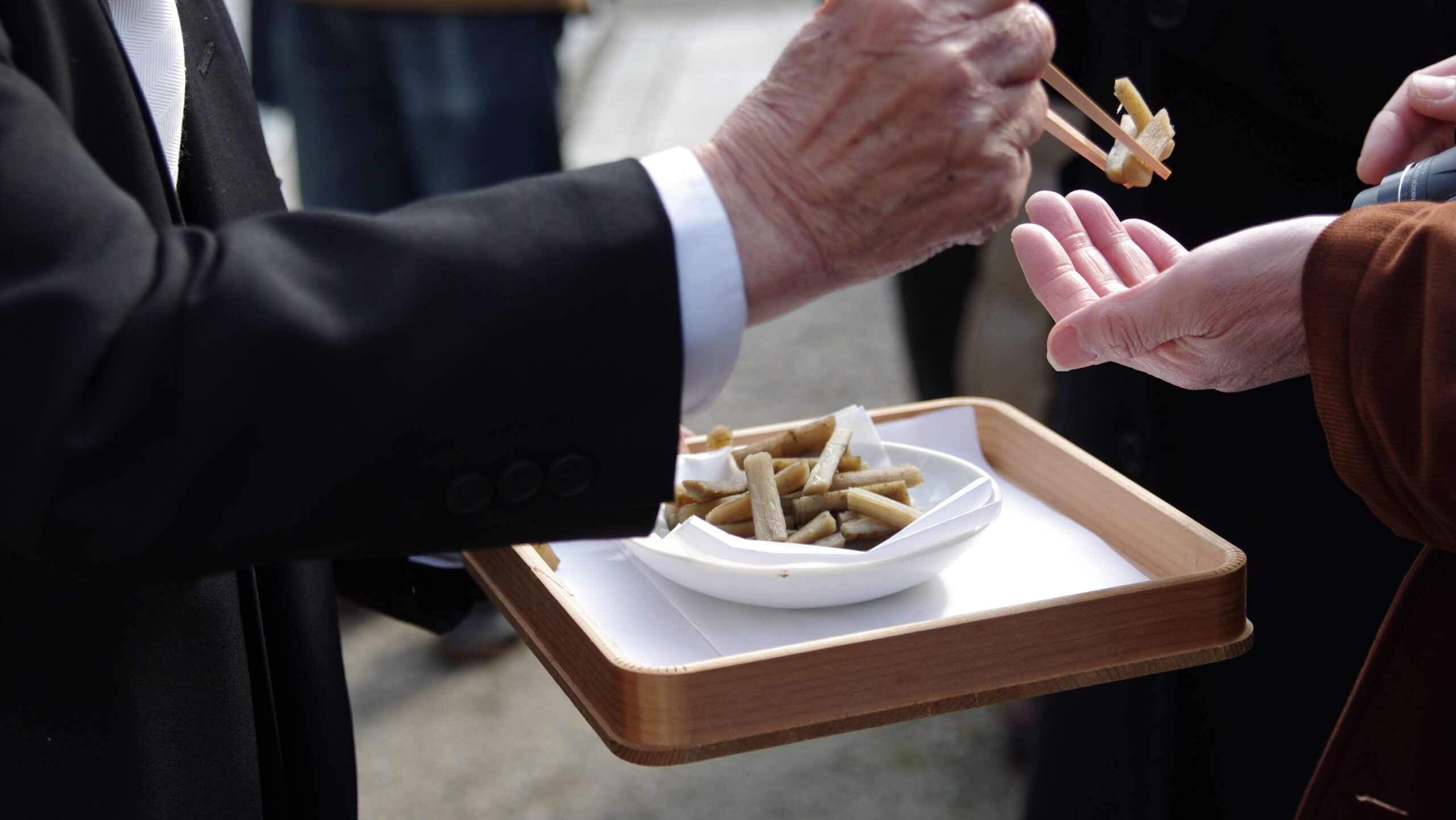
A shrine representative dressed in a black suit with a white tie and a green armband adorned with golden kanji carefully hands out small servings of simmered burdock root called kinpira gobo.
The Procession of Tradition
Then, the procession started moving outside of the shrine grounds, through the streets before they re-entered and walked gracefully toward the shrine. The young girls, dressed in stunning red hakama and green-pink kimono, walked with solemn dignity. Each of them wore a decorative golden headpiece adorned with ornaments and carried a sacred sakaki branch, decorated with shide (zigzag-shaped paper strips)—a traditional Shinto offering used to invite the presence of the kami.
Their parents, dressed in elegant kimono and formal wear, walked beside them, carefully holding their hands. The presence of parents, I believe, emphasized the importance of continuity and tradition, as they guided the next generation through this centuries-old ritual.
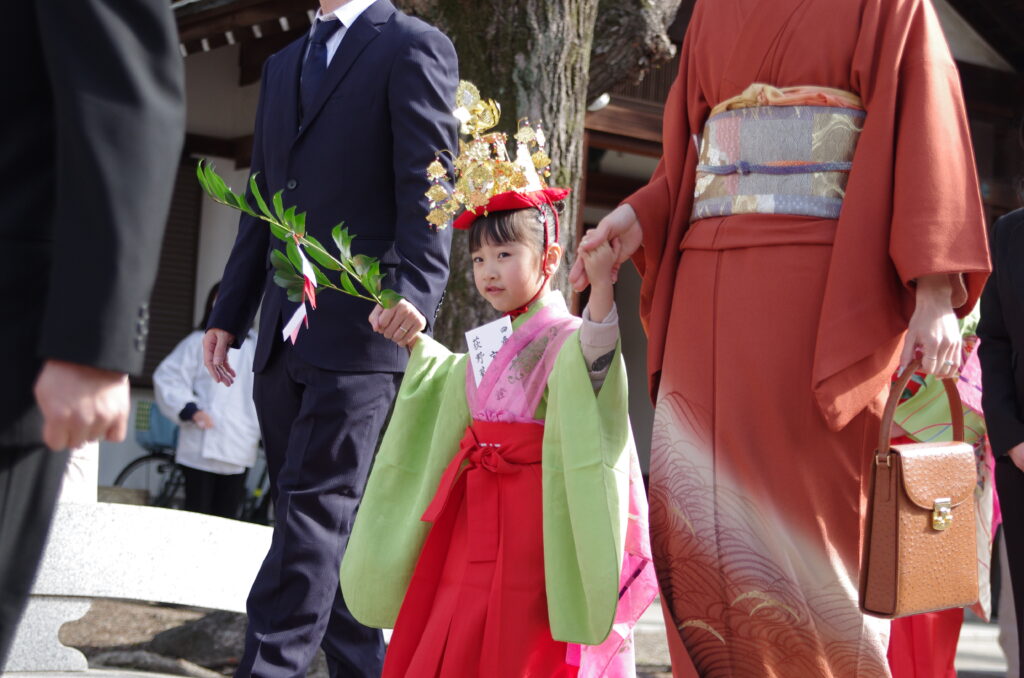
One of the seven young girls dressed in red hakama and green-pink kimono walks hand in hand with her formally dressed parents.
Accompanying them were men dressed in blue happi coats with white kanji characters, signifying their roles as festival participants and shrine caretakers.
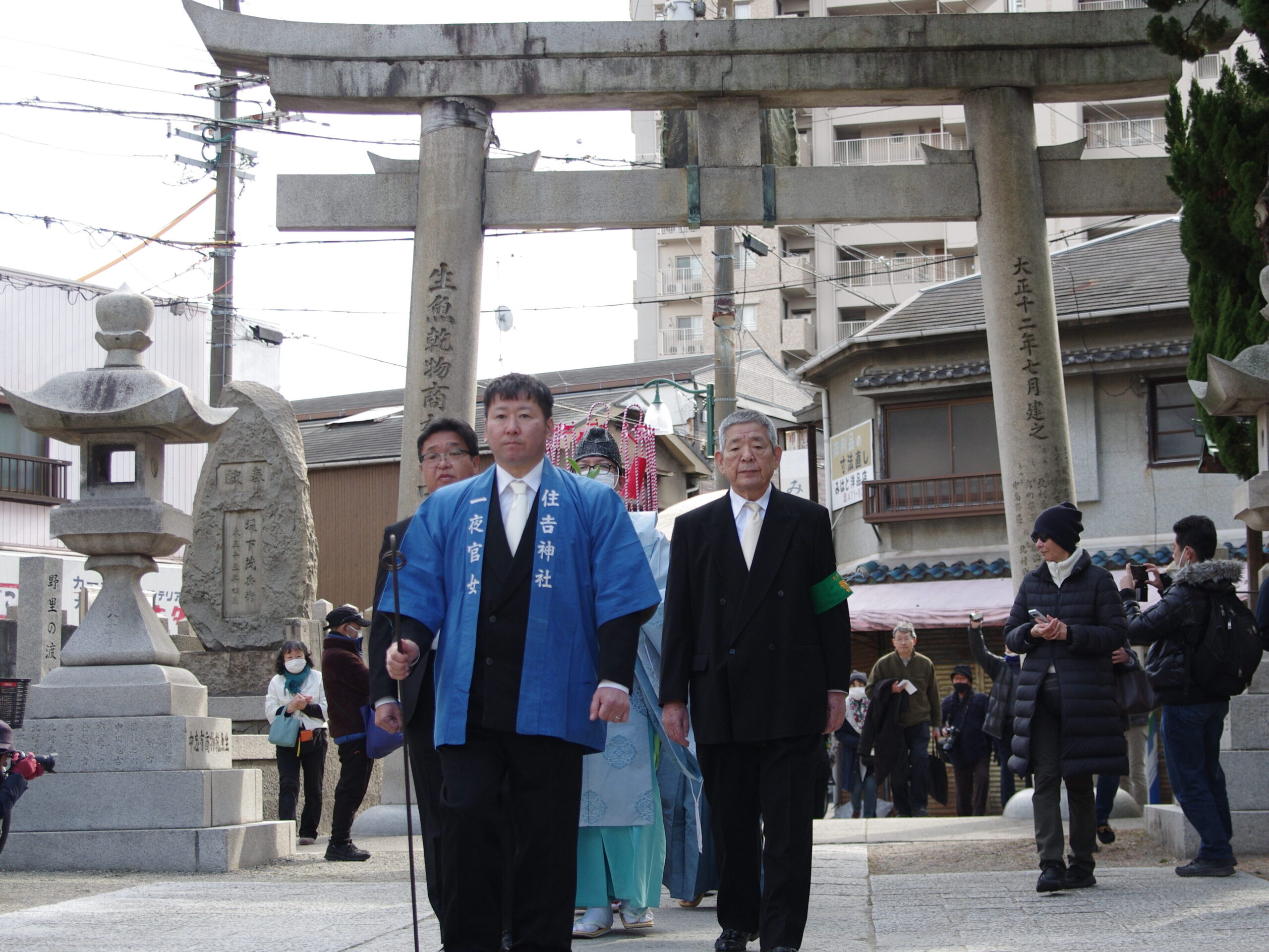
The parade comes through the front gate to enter the shrine grounds, the leading figure wears a blue happi coat.
A samurai figure, wearing a traditional straw hat and dressed in a blue ensemble, walked with a commanding presence. His role seemed symbolic—representing a guardian of the shrine and protector of the ritual.
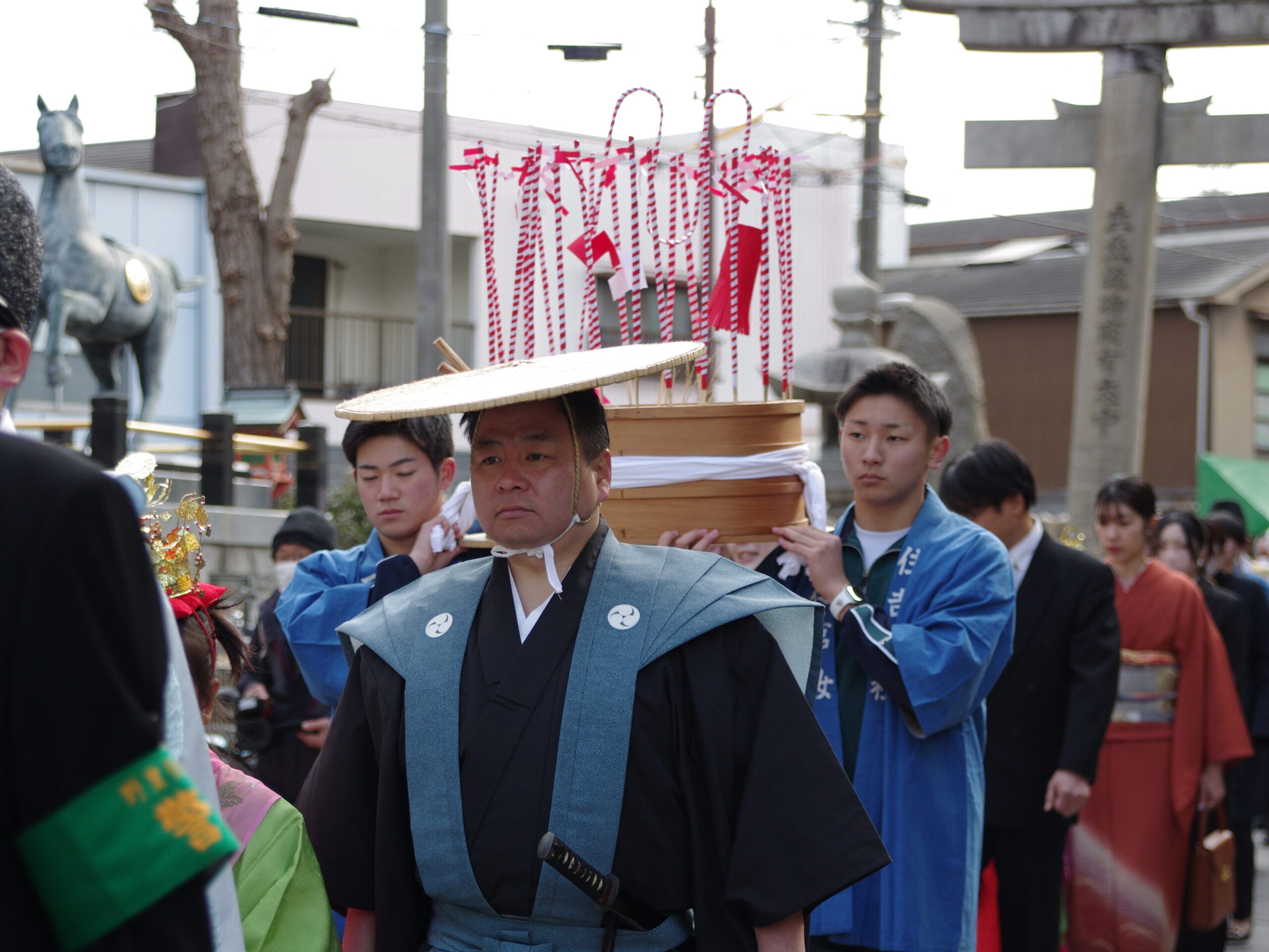
The parade comes through the front gate , close up on a man with a flat straw hat followed by two young men in blue happi coats who carry a
large wooden barrel adorned with red-and-white striped sticks
Among the most striking elements of the procession were the sacred offerings being carried:
• A wooden box carried by two young men in blue happi coats: This box, wrapped with red-and-white paper, seemed to contain sacred objects or symbolic gifts for the kami. It could have included written prayers, ritual foods, or other items of spiritual significance, representing a gesture of gratitude and a request for continued divine protection.
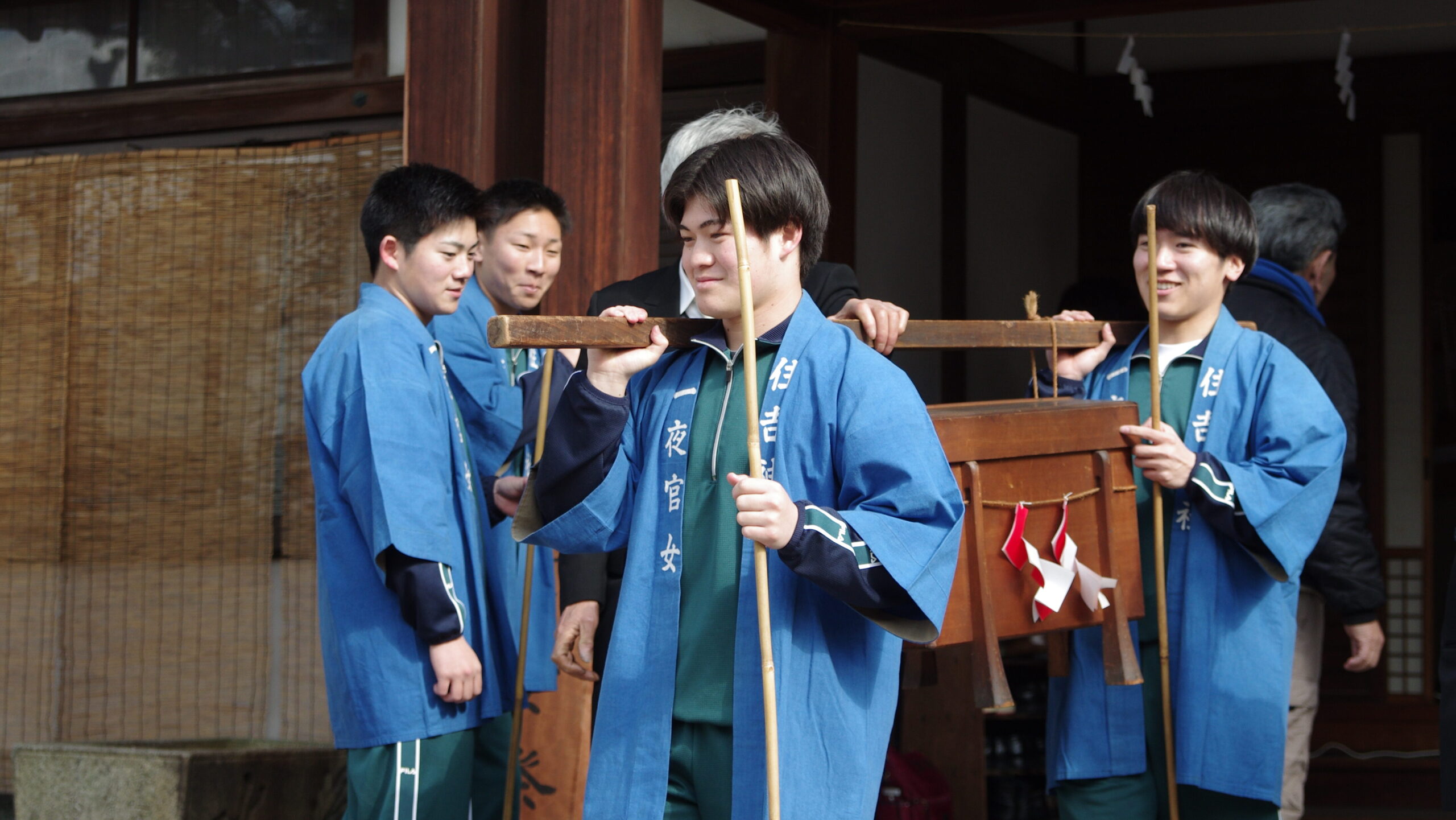
Four young men in blue happi coats smiling, two of them start the parade, they carry a large wooden box filled with gifts to the kami.
• A large wooden barrel adorned with red-and-white striped sticks: This symbolic offering vessel, known as a tsutsumi, contained what appeared to be mochi (rice cakes) or other ritual foods intended for the kami. The red-and-white twisted paper decorations (mizuhiki) signified purity and blessings, reinforcing the spiritual nature of the event.
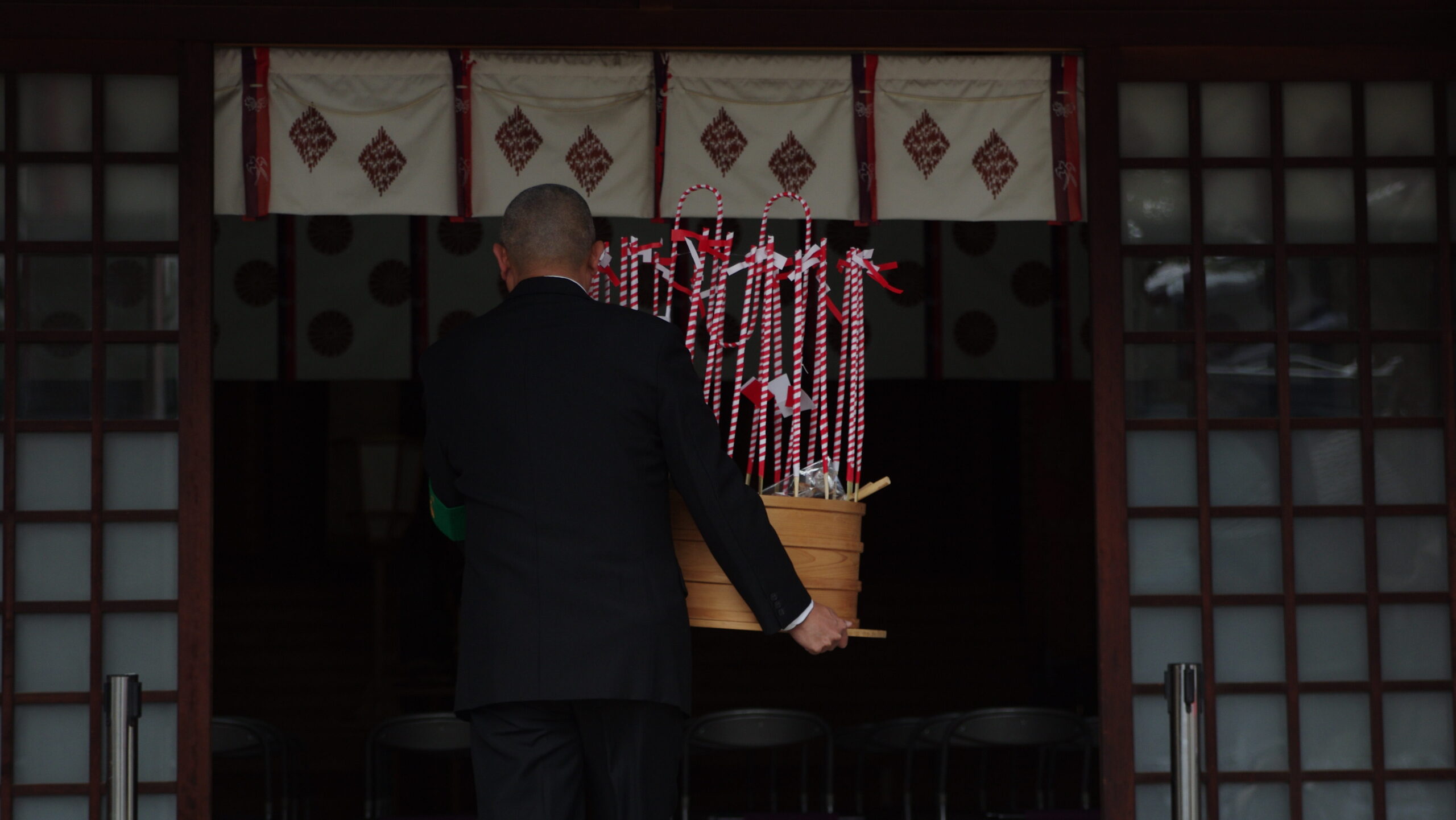
As the parade entered the shrine and the ritual preparations began, I noticed some attendees holding small paper cups. Curious, I asked them what they were drinking, and they directed me to a small Amazake stand near the shrine, where an elderly photographer lady I had spoken to earlier gestured for me to come closer.
She had previously shared stories about other upcoming festivals, like the Hina Nagashi and the Yuri Matsuri, and pointed to a flyer explaining their significance. I was handed a warm cup of amazake, a sweet fermented rice drink, which I sipped as I listened to the locals share the true history of the Ichiya Kannyo Festival.
The Truth Behind the Ritual
Contrary to the more dramatic accounts of human sacrifice, these women assured me that no one was ever actually killed. Instead, hundreds of years ago, chosen young girls had to spend one night confined in a box inside the shrine. This, they said, was part of a ritual believed to appease the deities and prevent disasters, particularly the devastating floods that once plagued the area. An elderly man nearby confirmed this story, emphasizing that the shrine stands close to the river, which frequently overflowed in the past. Now, the water level is shallow, and flooding is no longer a concern.
Instead, the festival has evolved into a prayer for protection against other catastrophes—whether natural disasters, disease outbreaks like COVID-19 or hardships faced by the community.
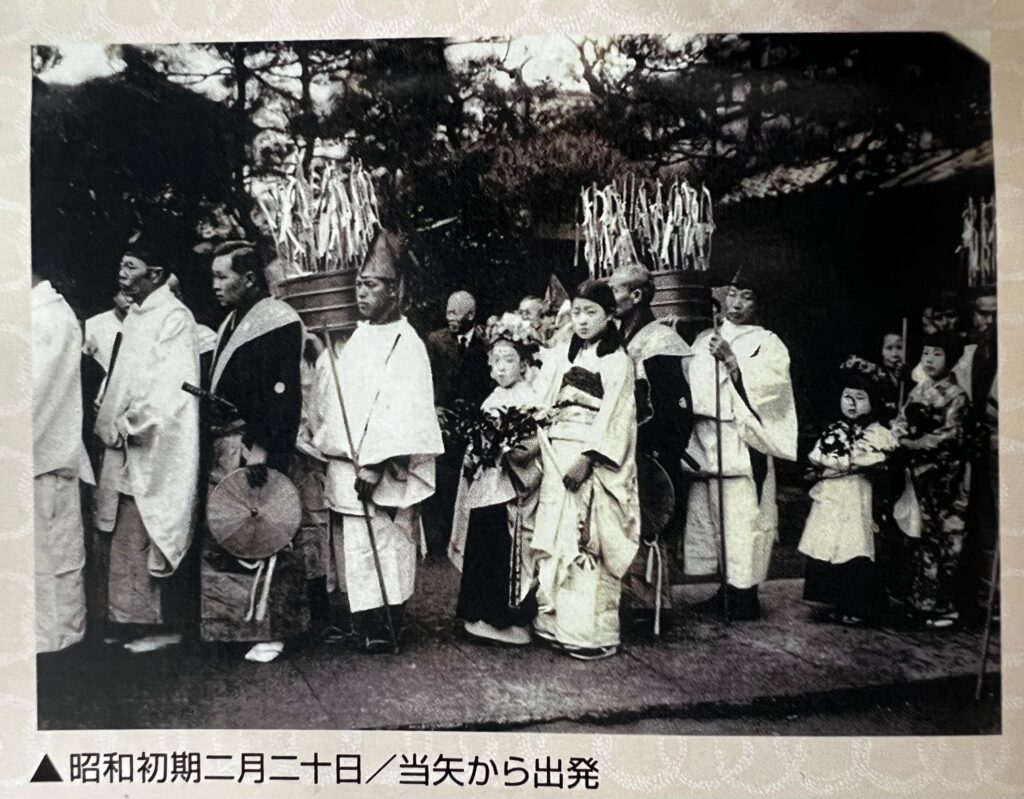
Black and white photograph out of a brochure from the Ichiya Kannyo Parade in Early Showa Period
This Photograph has been taken from the Brochure next to the Nozato Sumiyoshi Shrine. The subtitle reads: Early Showa Period | February 20th
While photography was allowed outside, the actual ritual inside the shrine was strictly off-limits for filming. I stood at the entrance, hearing the occasional deep, resounding gong echoing through the sacred space. From what I could glimpse, the young girls knelt on stairs deeper inside the shrine, presenting small offerings—food, likely—to the kami. It was a solemn and humbling sight.
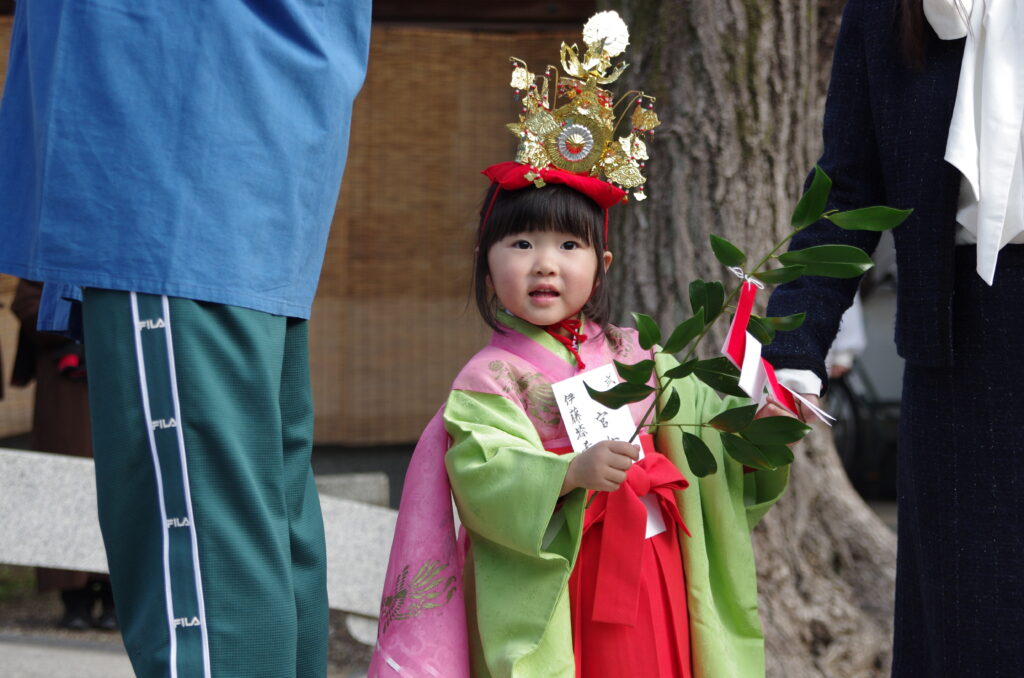
The youngest of the seven girls in her rose and green kimono and hair ornament.
As I had watched the parade enter the shrine, I could feel the weight of history and tradition woven into every movement. This festival, though lesser-known outside of Osaka, is a perfect example of how traditions evolve while maintaining their spiritual essence.
What was once a ritual tied to the forces of nature has now transformed into a broader prayer for protection and peace. And for me, experiencing it firsthand—not just through my lens, but through the words of the people who keep this tradition alive—made it all the more meaningful.
All images on this blog except the black and white photograph are © 2025 Leyla Ozkan. Unauthorized use is prohibited. Contact @leyla.clicks (Instagram) for licensing.